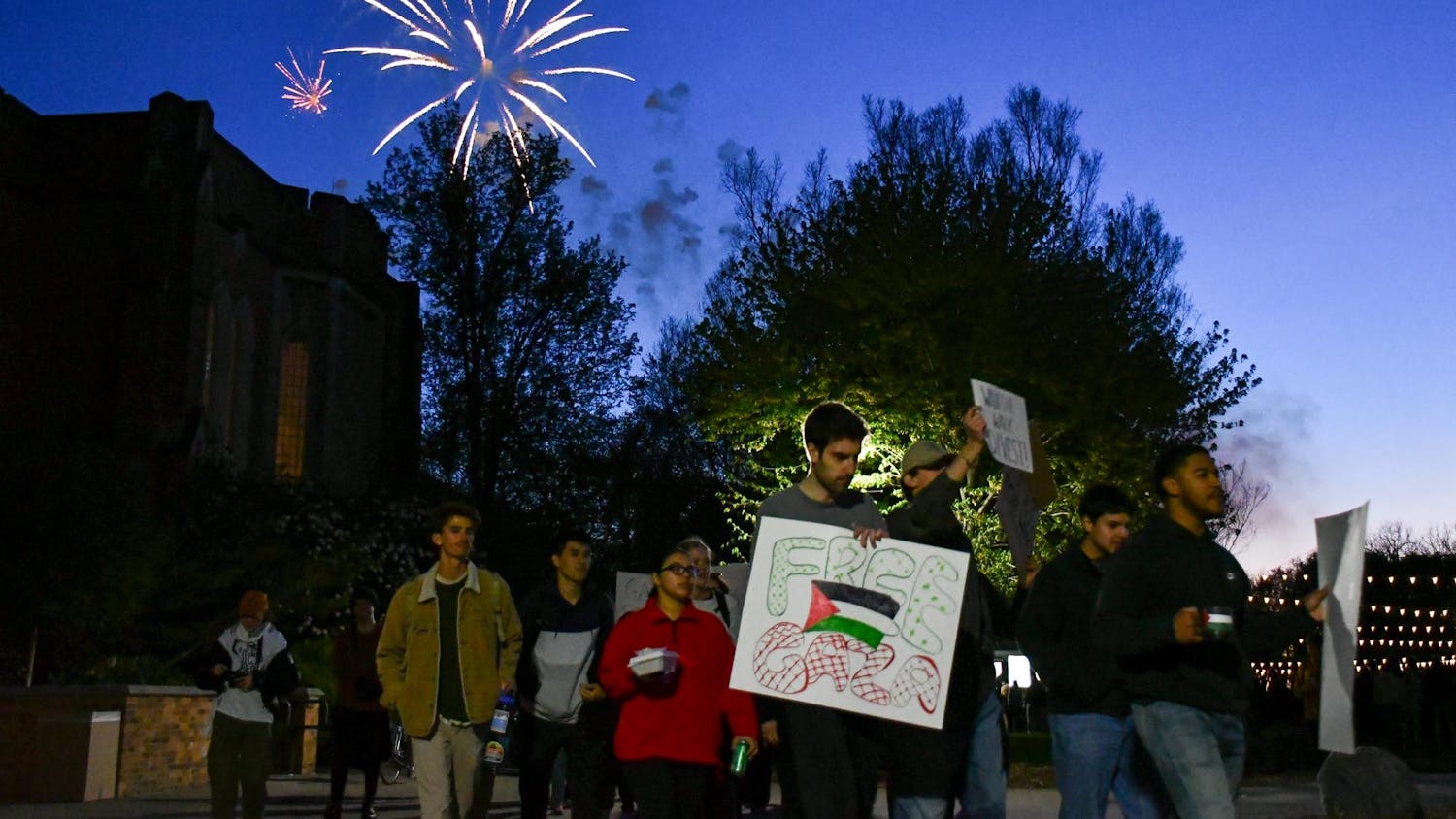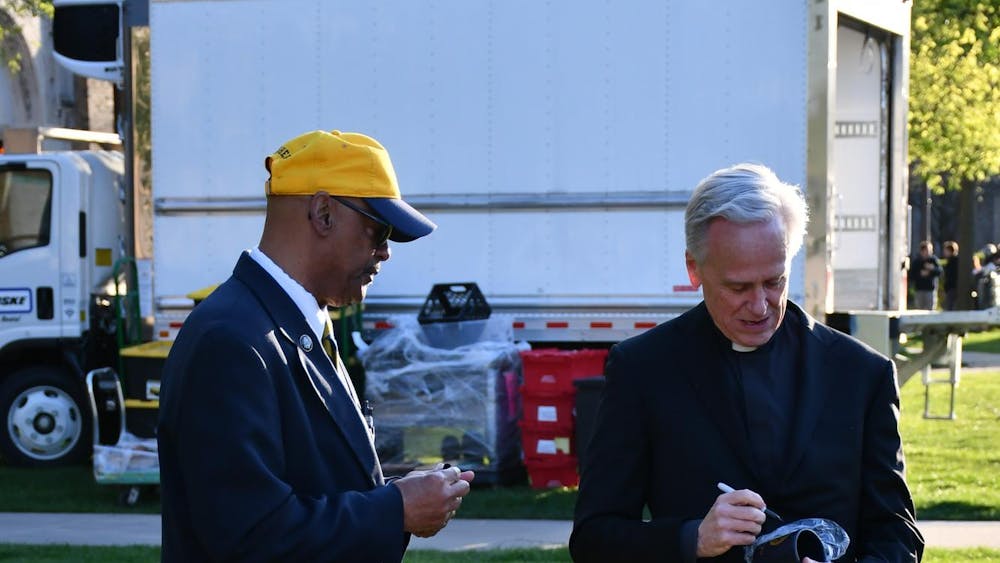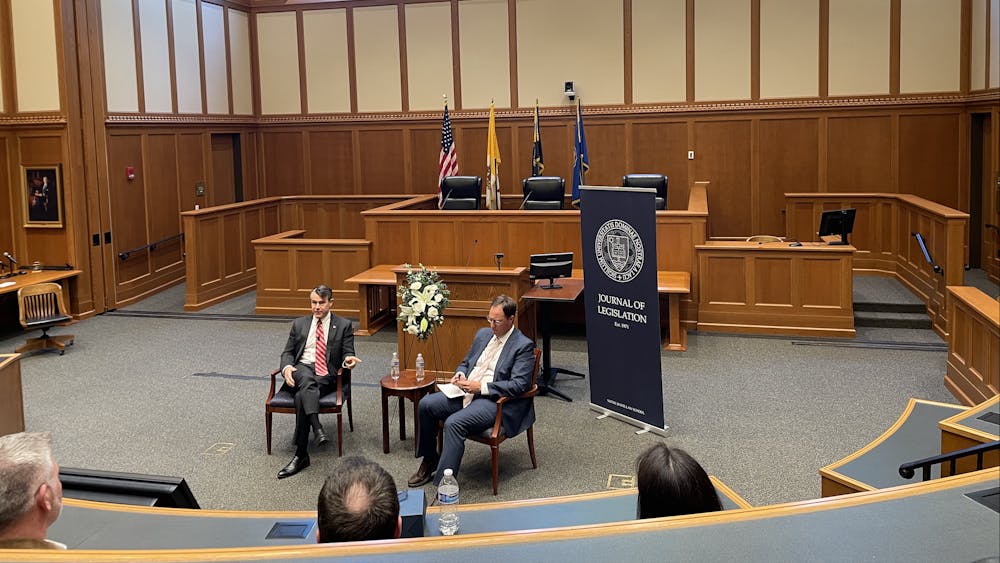Even the most distant parts of the final frontier are no longer beyond the reach of Notre Dame physicists with the recent discovery of the supernova "UDS10Wil."

Physics professor Peter Garnavich and physics graduate student Brian Hayden worked as part of a team of researchers on the CANDELS+CLASH Supernova Project to detect the most distant supernova yet discovered. Garnavich and Hayden will announce the discovery by co-authoring a paper, which will be published in the Astrophysical Journal.
Hayden said the supernova is so distant the light from the event has taken 10 billion years to reach Earth.
"It's at a redshift of about 1.9, roughly 10 billion years old," Hayden said. "It's taken that long for the light to reach us."
Garnavich said the type Ia supernova the two co-discovered was nicknamed "SN Wilson" after the 28th president of the United States, Woodrow Wilson, with the official name "UDS10Wil."
Hayden said scientists estimate the age of the universe is in the neighborhood of 13.8 billion years, so this discovery is close to the frontier. This entity is classified as a type Ia supernova, a special kind of cosmological phenomenon that can be used to measure the enormous distances in space, Hayden said.
The brightness of the supernova can be used to determine its distance from Earth, which can then be used to judge the distance from Earth to other objects in space, Hayden said.

"We use supernovae to tell distances in the universe - if you know how bright the supernova is when [you] look at it, you can use that to calculate the distance to it and we can then use that value to trace the expansion history of the universe itself," Hayden said. "Dark energy was discovered using supernovae like this."
Garnavich said a large portion of his and Hayden's research focuses on determining the effects of the host galaxy on type Ia supernovae. The effects are often small, but in trying to produce a model for the expansion history of the universe using multiple supernovae, the errors can add up fast, Garnavich said.
"The amount of heavy elements, the history and the age of the stars in the galaxy has the effect of 'cooking' the star that eventually explodes as a type Ia supernova," Garnavich said. "So we're kind of using the stars that remain as tracers of what that star that blew up actually was like."
A significant issue elucidated by using type Ia supernovae to develop an expansion history of the universe is the interplay between dark energy and matter, Hayden said.
"We're trying to determine how much of each one of those parameters is pulling on the universe at different times," Hayden said. "Dark energy makes the expansion of the universe go faster, but matter would want to slow it down."
The CANDELS+CLASH consortium consists of a group of astrophysicists working together on a three-year-long project involving the Hubble Space Telescope to collect this incredibly far-reaching data, Garnavich said.
"In order to really push the edges of things, we know we need to be part of a fairly large team," Garnavich said. "We get a fair amount of real estate to go through, and then we identify all the things we think might be supernovae and send them off to a single location where they get compiled."












